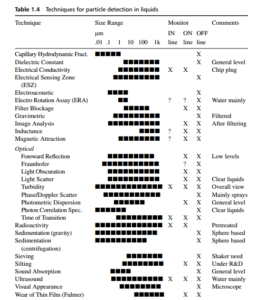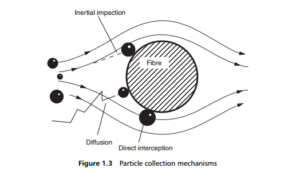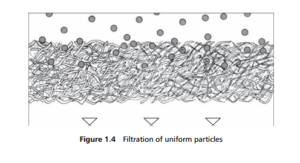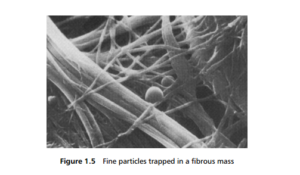0
-
An empty cart
You have no item in your shopping cart
envato-wordpress-toolkit domain was triggered too early. This is usually an indicator for some code in the plugin or theme running too early. Translations should be loaded at the init action or later. Please see Debugging in WordPress for more information. (This message was added in version 6.7.0.) in /var/www/wp-includes/functions.php on line 6121g5plus-darna domain was triggered too early. This is usually an indicator for some code in the plugin or theme running too early. Translations should be loaded at the init action or later. Please see Debugging in WordPress for more information. (This message was added in version 6.7.0.) in /var/www/wp-includes/functions.php on line 6121The basis of the particular mechanical separator that is called the filter is the placing across the fluid flow of a barrier, the filter medium. This acts like a porous screen, allowing those arriving particles – which are below a certain size – to pass through the openings that give the medium its porosity, together with the carrier fluid. Those

particles that are too large to pass are retained on (or in) the medium, for subsequent removal in some other way. [It should be noted here that in some filters the collected solids are continuously or intermittently brushed or scraped from the surface of the medium, into a collection hopper below the filter. While in others the filter medium is withdrawn continuously or intermittently from the filtration zone so that the collected solids may be removed from the medium in another part of the filter.]
The nature of the filter medium is critical to the filtration process, and the various types of media will be described in Section 2. Suffice it to say here that there are ten broad types of media material to be considered. Of these ten types only one does not
have a version that is fibrous in structure. All the rest are entirely fibrous, or have a significant component in fibrous format.
It follows that, to find how filtration works, it is necessary to examine the way in which a bed of fibres can stop a particle moving towards and through it. The process is illustrated in Figure 1.3 , which shows the cross-section of a single fibre in a fluid flow from left to right, carrying some particles in suspension.

The first major point to note is that any particle, in the absence of electrical charges on fibre or particle, once brought close enough to the fibre, will be attracted to the fibre, until contact is made, and then the particle will stay put. The attractive
forces are quite weak (known as van der Waal ’ s forces), but are sufficiently strong to hold the particle on the fibre surface once it is there, independent of the way in which the particle arrived. The particle should be very close to the fibre for this
process to occur, but once it has been trapped, then the trapped particle acts like an extension of the fibre, and can then, in its turn, trap other particles.
It follows that, if the fluid flow is such that the particle is brought into contact with the fibre, it will be caught and held by the fibre – it has been filtered. Another point to remember is that the flow inside the medium is close to, if not actually, laminar, so that the fluid flows in smooth streamlines around obstacles in its path, as shown in Figure 1.3 . Unless otherwise disturbed, the particles follow these streamlines through the bed of fibres. If the particle is small, it will be contained within a packet of streamlines, and will be swept past the fibre and onwards without being caught.
As the streamlines bend round the obstacle, they carry particles with them, and if a particle in so doing is taken to a distance of less than half of its diameter from the fibre surface, as has happened to the lowermost particle in Figure 1.3, then it will
come into contact with the fibre and so get trapped. This mechanism is known as direct interception, and, by definition, it must happen on the flanks of the fibre, not directly in front of it.
In turning their path to pass by the fibre the streamlines take the suspended particles with them. However, a larger particle (or a particle moving fast) will carry too much inertia to make the turn. It will then cross the streamlines and collide with the
fibre, and be trapped. This mechanism is termed inertial impaction, which has happened to the topmost trapped particle in Figure 1.3 .
Another group of particles do not stick to the streamlines but meander about, in and across them. This is diffusion behaviour, affects mainly small particles, and is largely caused by the Brownian motion of the carrier fluid. The particle thus pops
out of the streamline pattern near to the fibre surface, and once again is trapped, as is the case for the smallest of the trapped particles shown in Figure 1.3 .
These are the three main mechanisms for particle entrapment in a bed of fibres, but there are others. For example, the small particle on the left of Figure 1.3 is going to find it difficult knowing which way to go around the fibre. It will probably be carried straight towards the front face, but before it reaches it, will become involved in the fluid eddy pattern that must exist just in front of the fibre. It is then likely to exit from this pattern either into the by-passing streamlines, or by getting
trapped on the front surface of the fibre.
The above paragraphs describe the mechanisms whereby particles or droplets can be attracted to and deposited on the fibres of a filter. It will be apparent that uniformly sized particles will be removed in the manner shown in Figure 1.4 , with
each particle passing through the mass of fibres until it is trapped.

It will also be apparent that, although very fine particles can pass right through the medium, the mass of fibres can trap particles significantly smaller than the flow channels (pores) in between the fibres, by any of the above mechanisms. This can
be seen in Figure 1.5, which shows a highly magnified view of a fibre mass holding two quite small particles (around 1 μm in size, at a magnification of 9500X).

This ability to trap particles smaller than the apparent aperture size is a very important characteristic of filter media, and shows that media need to be tested.